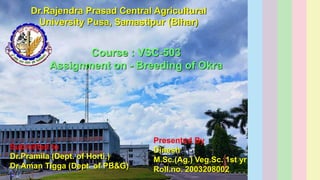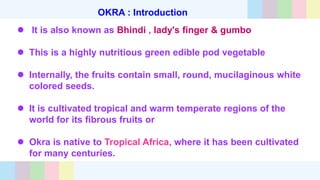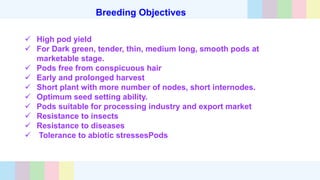The document presents an assignment on the breeding of okra (Abelmoschus esculentus), detailing its taxonomy, origin, distribution, botany, crop improvement methods, and improved varieties. It highlights the various breeding objectives and methods used, including pedigree selection and mutation breeding, along with the nutritional value and cultivation practices of okra. Additionally, it lists several improved varieties developed for resistance to yellow vein mosaic virus and their yield potential.




















